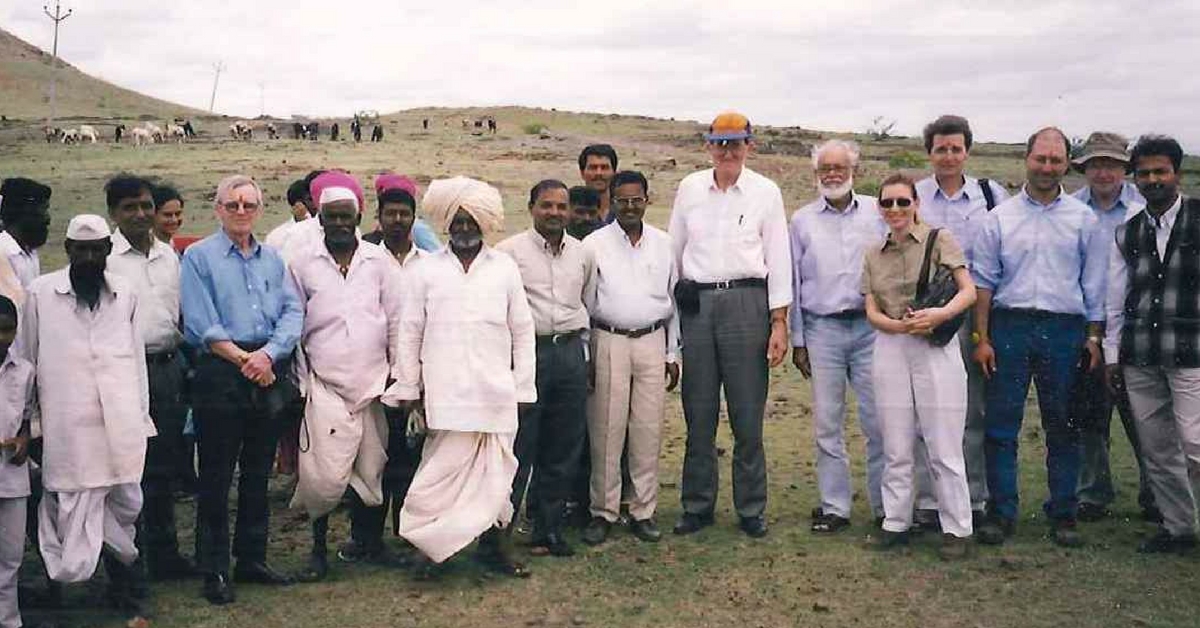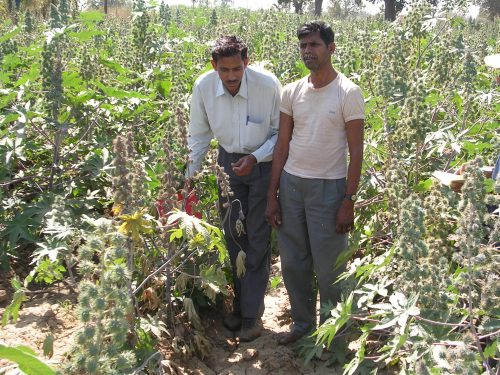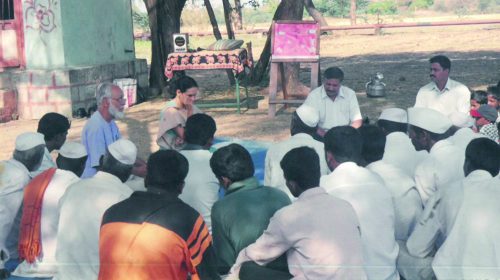TBI Blogs: Meet the Gandhian ‘Warrior’ Who Uses the Best of Global Technology to Help Indian Farmers
Plagued by multiple problems, India’s agriculture and animal husbandry industries were unable to catch up to global standards of production and quality for a very long time. This is the story of the man who has made it his life’s mission to rectify those problems.

Plagued by multiple problems, India’s agriculture and animal husbandry industries were unable to catch up to global standards of production and quality for a very long time. This is the story of the man who has made it his life’s mission to rectify those problems.
Born on July 17, 1931, BonBehari Vishnu Nimbkar has been contributing to society without breaks throughout his life. He set up the Nimbkar Agricultural Research Institute (NARI) in 1968 with the objective of using the best tools science and technology can provide to solve rural problems and contribute to constructive policy development.
Known for his pioneering work in the field of agriculture and animal husbandry for over five decades, Nimbkar has been instrumental in increasing crop and animal productivity, and passing on the benefits directly to farmers and animal rearers.

Nimbkar studied at Rajkumar College, Rajkot before going to his maternal grandfather’s home in the USA in 1945. His grandfather was a Quaker, and the biggest inspiration behind Nimbkar’s decision to live a simple life dedicated to the people of India. It was also his father’s wish that he return to India and undertake farming. Therefore, on finishing high school, Nimbkar enrolled at the College of Agriculture at Rutgers University in New Jersey.
BonBehari Nimbkar was brought up with a feeling of nationalism. This was further strengthened by his fortunate marriage to Jai Karve, a highly educated girl who wanted to stay in a village after marriage. She came from the philanthropic family of Karves, where her grandfather was a pioneer in women’s education and emancipation, and her uncle was well-known for his views on sex education and family planning.
Upon returning to India, Nimbkar tried planting new types of cotton, despite a Government ban on such activities as they went against the ‘Permit Raj’ in force at the time. A team of crop breeders and agricultural engineers from the Rockefeller Foundation (RF) – which was trying to initiate the Green Revolution in India in the early Sixties – helped Nimbkar set up the seed company. With this assistance, Nimbkar could grow thousands of acres of seed crops, process them, and market the seeds all over India. He also learnt how to convert CSH-1 (the first sorghum hybrid released in India) to Vasant-1 by changing the pollinator.
Even today, Vasant-1 is on the list of approved varieties in Maharashtra.

Nimbkar mobilized farmers to organize lift-irrigation schemes in 1972. With the help of his friend, 14 lift-irrigation schemes were designed and set up. Nimbkar was the Director of the Central Bank of India at the time, and hence could easily arrange finance for the schemes.
Nimbkar started making regular trips to the United States once every five years, and every time he saw some new crops there, he tried to introduce them into India. He used the same technique used by the Rockefeller Foundation, viz. foreign germplasm suitably modified for Indian conditions. Sweet sorghum was a crop introduced to India by Nimbkar; work on improving breeds of sweet sorghum – and safflower – continues at NARI under the All India Coordinated Research Programme, funded by the Indian Council of Agricultural Research (ICAR).
NARI obtained all the germplasm for the sweet sorghum project from United States Department of Agriculture (USDA). Research was carried out during initial breeding to improve the quality and quantity of grain in sweet sorghum.
In the 1980s and 1990s, protocols for production of syrup, jaggery, and ethanol from sweet sorghum, and lanterns and stoves for use of ethanol for lighting and cooking were developed.

In 1990, Nimbkar directed his interests away from irrigated agriculture to dryland farming. He soon discovered that most of the rain-fed farming areas had lost their soil fertility due to ploughing and excessive cultivation with tractors. Although grass was the only option available for growing on such land, one could profitably raise ruminants on these grasses. As the Chairman of the Maharashtra Sheep and Goat Commission, Nimbkar submitted a report to the Government in 1992 after a thorough study of the sheep and goats in Maharashtra. In that report, he emphasized the introduction of genetic material from abroad, and genetic improvement of sheep and particularly the goats. However, most poor farmers owned one or two goats each, and the Government was not interested in improving these animals.
Nimbkar and his team came to know about a discovery by Dr. Helen Newton Turner in Australia, that the Garole breed of sheep in West Bengal has a high frequency of twinning. In India, sheep generally produce only one lamb at a time, so Nimbkar felt that if this gene was introduced into Deccani sheep, they would produce two lambs instead of one and the income of shepherds would increase by at least 70 %. The Australian Centre for International Agricultural Research (ACIAR) supported this research from 1998 to 2008, which resulted in the production of the prolific ‘NARI Suwarna’ sheep.
The ‘NARI Suwarna’ sheep was promoted in Karnataka, especially in the Tumkur district, with the support of the Ministry of Animal Husbandry.

The Australian Government was also instrumental to Nimbkar’s work when 20 embryos of the Boer goat were imported from Australia with the support of AusAID. These crossbred Boer goats have been very popular in India, and their introduction in India has resulted in a large increase in productivity and profitability to goat owners. The impact of this research on small ruminants is possibly the most lasting of all of Nimbkar’s activities so far.
Nimbkar observes all that ails Indian farmers and tries to fix it by bringing the best of global research to India and to Phaltan. At the same time, his solutions suit local conditions and draw on traditional practices. His leadership has led to the formation of a dedicated team, and facilitated resource mobilization and collaboration with the best professional agencies and scientific communities to effectively bring forth technology, tests, modification, stability, and dissemination for the benefit of India’s rural communities.
NARI is a good example of the involvement of Nimbkar’s family members in his work. They are socially motivated, technology-driven, and dedicated to rural development; however, BonBehari Vishnu Nimbkar is the pivot who provides leadership and initiative to rural people, and other members of his family, on a sustained basis.
Recently, on 7th November, 2016, Dr. Chanda Nimbkar, daughter of Mr. BonBehari Vishnu Nimbkar, received the Jamnalal Bajaj Award in the category for Application of Science and Technology for Rural Development on his behalf.

Know an inspirational changemaker working for rural development at the grassroots level? Click below to nominate them for Jamnalal Bajaj Awards 2017.
Unable to view the above button? Click here
Like this story? Or have something to share? Write to us: [email protected], or connect with us on Facebook and Twitter.
NEW: Click here to get positive news on WhatsApp!
This story made me
- 97
- 121
- 89
- 167
Tell Us More
We bring stories straight from the heart of India, to inspire millions and create a wave of impact. Our positive movement is growing bigger everyday, and we would love for you to join it.
Please contribute whatever you can, every little penny helps our team in bringing you more stories that support dreams and spread hope.




















